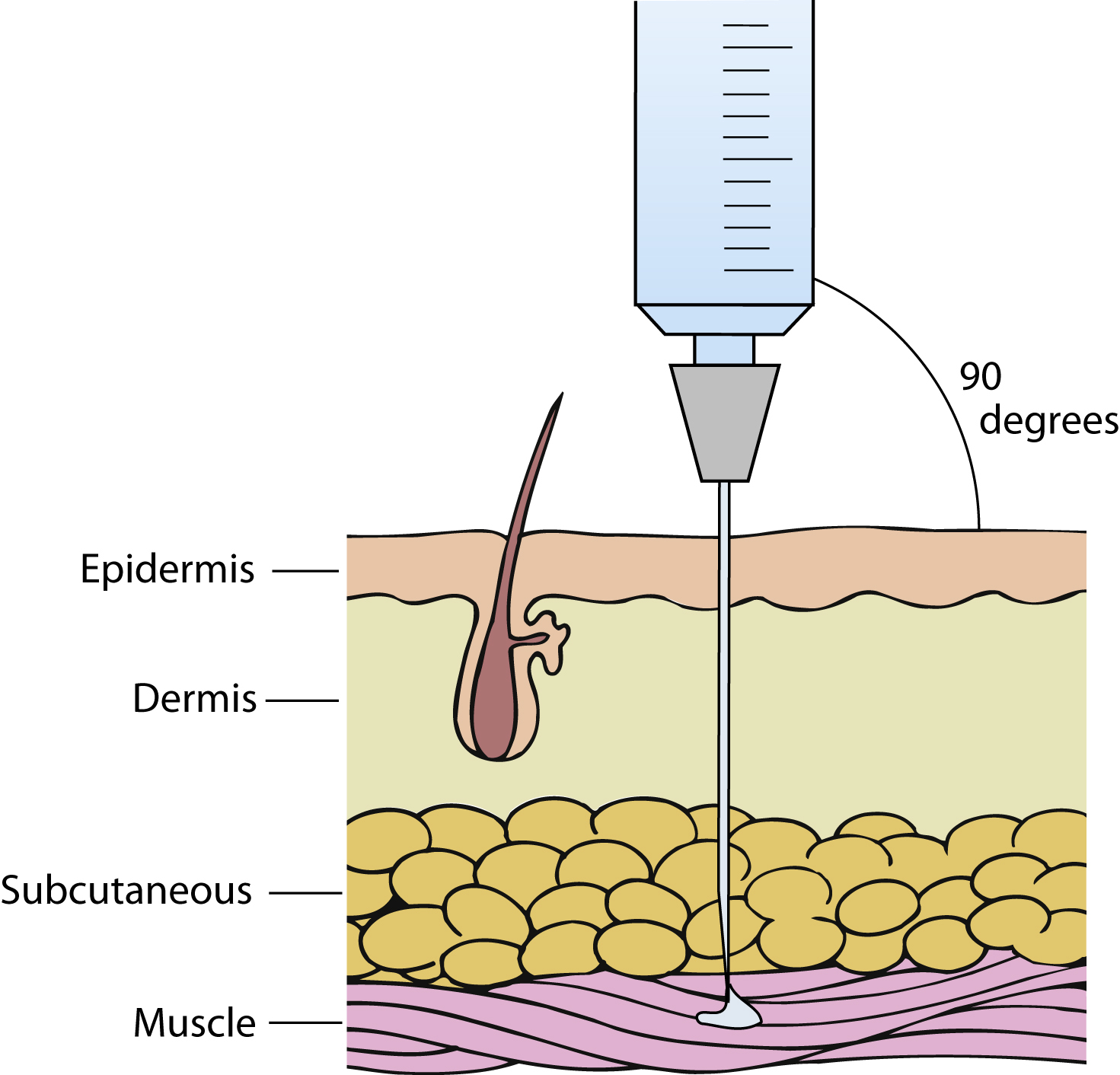intramuscular injection [L, intra + musculus] , the introduction of a hypodermic needle into a muscle to administer a medication. ▪ METHOD: The equipment is selected, and the medication drawn up into the syringe. The selected site is prepared by cleansing with alcohol. The sites most commonly used are the upper outer quadrant of the gluteal area, the ventrogluteal area, the vastus lateralis of the thigh, or the deltoid muscle. Care must be taken to identify landmarks and select sites to prevent damage to nerves and adjacent structures. The skin is stretched between the thumb and forefinger. The needle is introduced at a 90-degree angle to the muscle with a quick thrust and advanced as necessary—not as far as the hub of the needle, but deep into the muscle. The plunger is withdrawn slightly to be sure that the needle has not been placed in a blood vessel. The solution is injected slowly, the needle is withdrawn, and the injection site is massaged unless contraindicated. ▪ INTERVENTIONS: If the gluteal area is chosen, the patient is asked to lie prone with ankles bent and feet curved in, so that the toes of each foot are directed toward the opposite foot to relax the gluteal muscles, thus making the injection less painful. Injection into deltoid muscles is more painful than in other sites and is avoided if possible. The ventrogluteal area and the vastus lateralis are the preferred injection sites in infants. Care is taken not to hit the femur with the tip of the needle when injecting into the vastus lateralis. Needles and syringes are always disposed of safely in a puncture-resistant container without recapping. ▪ OUTCOME CRITERIA: Infection may result from nonaseptic technique; care is taken not to contaminate the needle before injection or to suffer a needlestick. Certain medications can cause tissue necrosis if injected into the subcutaneous tissues. Many medications may be given intravenously or intramuscularly, but the intravenous dose may be much smaller. Inadvertent injection into a blood vessel can cause severe systemic reactions of an overdose. Often biologicals, such as antigens, serums, or vaccines, may leave a knot in the muscle that is not painful and that subsides slowly over several weeks or months, though it may cause concern in the patient or in the parents of younger patients. The lump should not grow larger or become more painful. If it does, one may assume that an abscess has formed.

